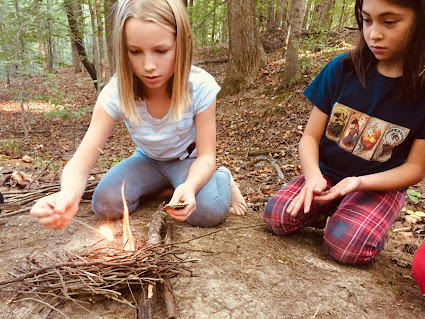Fire & Knives: Kids Need Risky Play

As parents, it's our job to protect our children but at what point do kids need to explore risk taking? Even though we may not always want to admit it, risk is a fact of life. There are hazards all over the place including in our own homes. It's just that some risks we've learned to live with while others continue to terrify us. For example, we're okay having metal forks in the house even though there are electrical outlets too. We've learned how to be safe around electrical outlets through stories and maybe even direct experience 😬. As a nature mentor who teaches regular outdoor classes for youth I can tell you that the two most popular activities for kids are building a fire and carving with knives. Both of these involve risk as there is definitely a dangerous side to each of these. I often start by telling kids something like "fire can be dangerous. It can get out of control and burn things down" (this gets their attention if I don't hav...